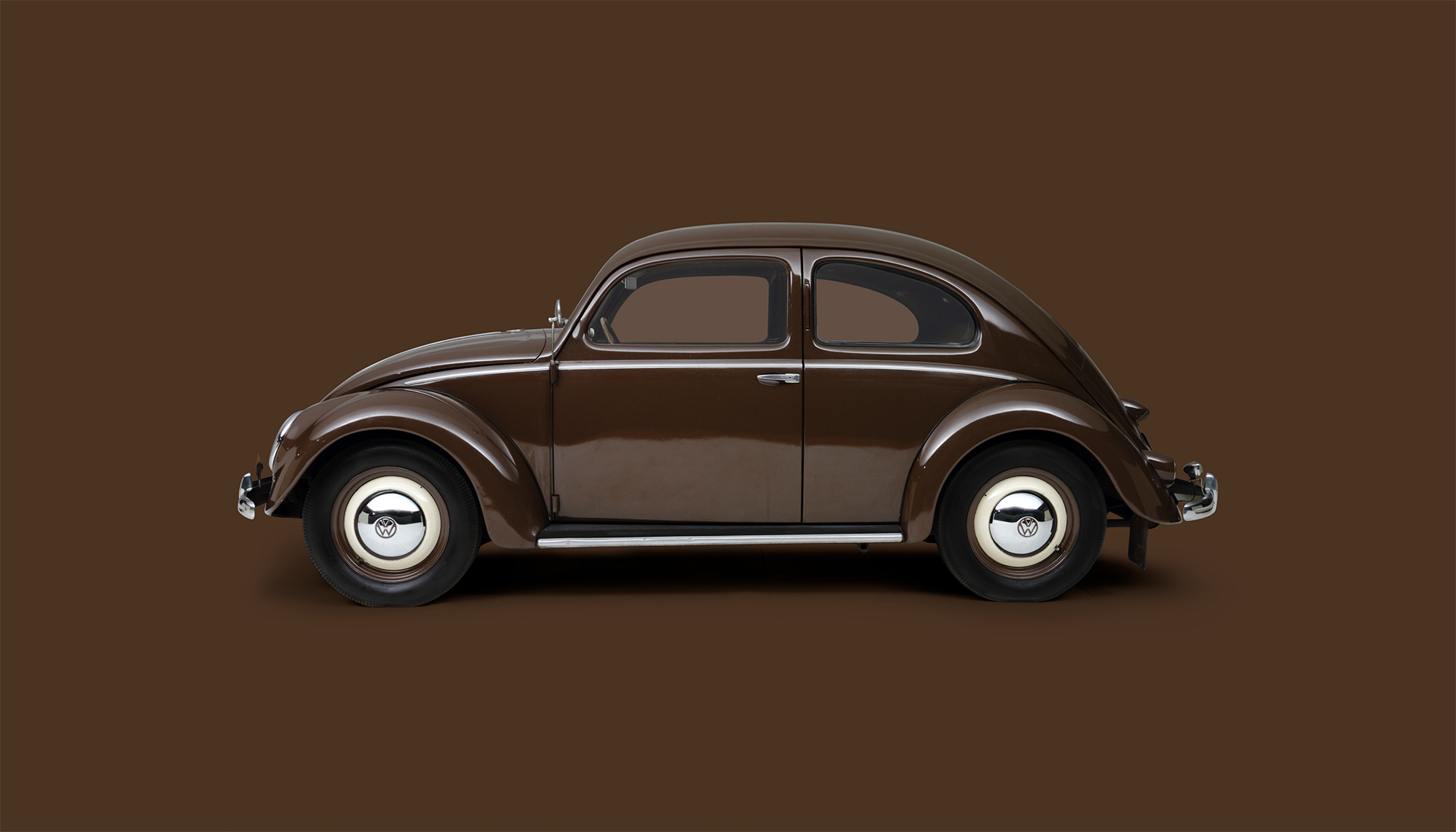Volkswagen Beetle De Luxe
Dit vroege type van de Volkswagen Kever heeft nog de kenmerkende dubbele achterruit, in de volksmond het ‘brilletje’ genoemd.
In 1953 wordt het vervangen door een ovale ruit, weer later door een groot rechthoekig exemplaar. Voor het overige blijft de auto vrijwel ongewijzigd; de onderdelen zijn vele jaargangen lang uitwisselbaar. Dat, plus de relatieve onverwoestbaarheid, zijn belangrijke punten die bijdragen aan de enorme populariteit van de Kever. Op het moment dat de productie in 2003 stopt, is de Kever met ruim 21 miljoen exemplaren een van de meest geproduceerde autotypes aller tijden.
De onverwoestbaarheid is te danken aan het feit dat de Kever al vóór en tijdens de Tweede Wereldoorlog uitgebreid is getest in moeilijke omstandigheden. De auto wordt in verschillende uitvoeringen gebruikt voor militaire doeleinden. De compacte, luchtgekoelde viercilinder boxermotor achterin bewijst zowel in lage als in hoge temperaturen zijn waarde, omdat hij noch vastvriest, noch oververhit raakt.
De ‘auto voor het volk’ wordt in opdracht van Adolf Hitler door Ferdinand Porsche ontwikkeld. Er zijn echter inmiddels aanwijzingen dat ook het gedachtegoed van de joodse ingenieur en auto-ontwerper Josef Ganz een rol speelde bij de totstandkoming van het uiteindelijke ontwerp. Midden jaren dertig vlucht Ganz uit Duitsland naar Zwitserland.
Na de oorlog zorgen de geallieerden ervoor dat de Kever zijn weg vindt naar de consument. Nederland wordt in 1947 het eerste exportland voor Volkswagen. In 1955 rolt het miljoenste exemplaar van de band.

